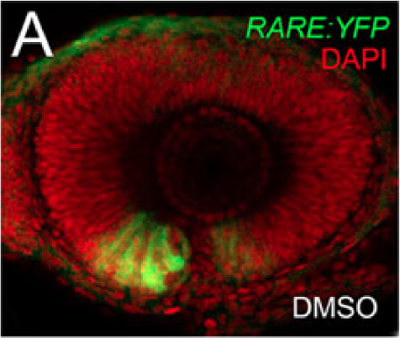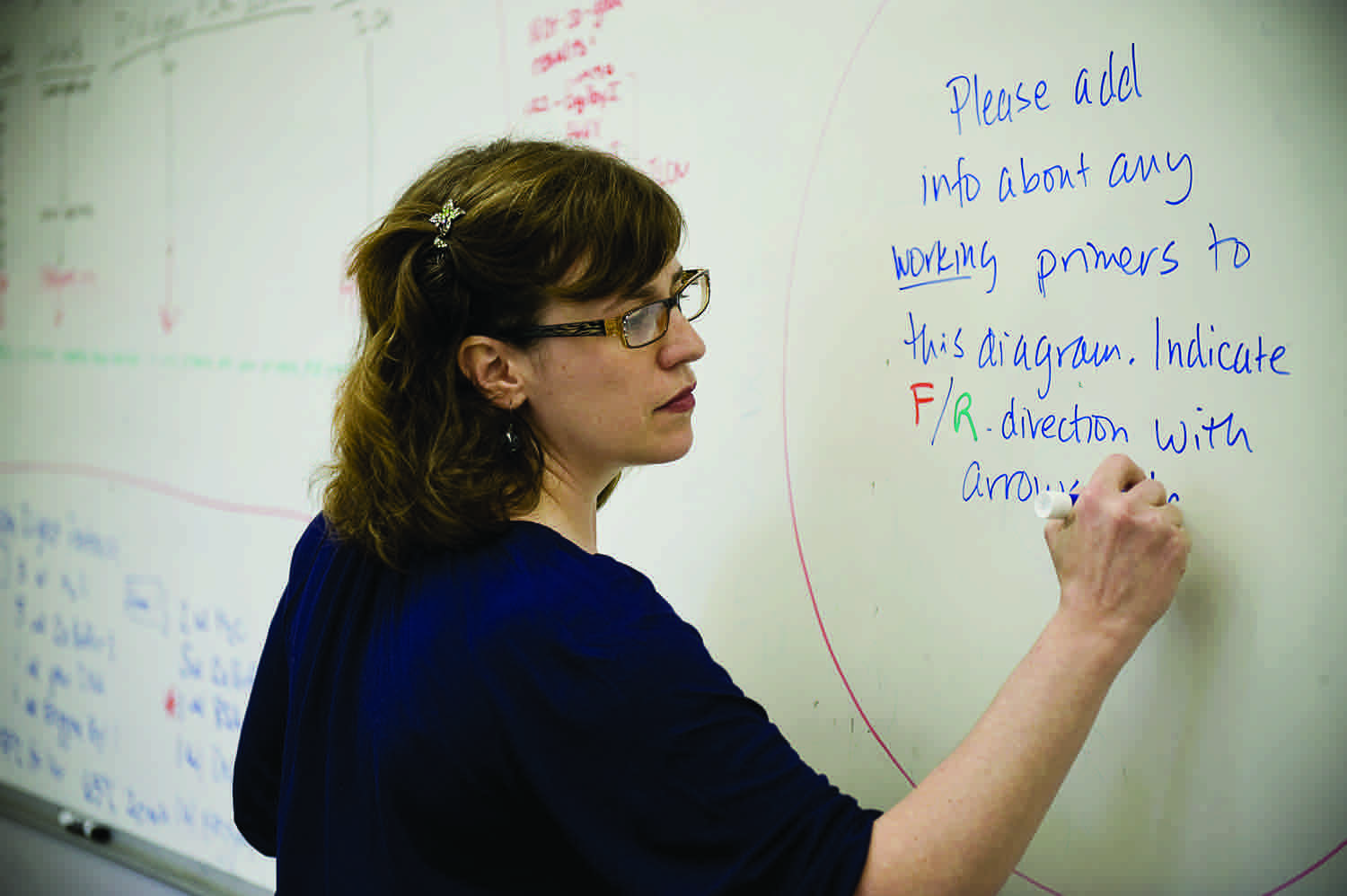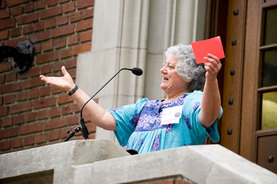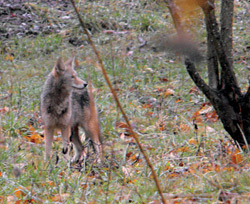
IRIS login | Reed College home Volume 96, No. 2: June 2017
Tags
"bio"
Reed Biologists Divide and Conquer
There’s a definite buzz around the Griffin Biology Building these days, and it’s not just the fruit flies. Like cells that keep dividing, the students, professors, and staff in the bio department keep generating news.
Prof. Derek Applewhite and Wick Perry ’13 published a paper in the Journal of Cell Science on a protein known as PIGS that has a dramatic effect on cytoskeleton organization. What, you ask, is the cytoskeleton? It’s the network of filament that gives a cell its shape and allows it to move. Prof. Applewhite’s research is focused on these fundamental structures.
Prof. Kara Cerveny and five of her former students published a paper in Development on the growth of the eye in zebrafish, and the role played by a mutant gene and retinoic acid in regulating the timing of this fiendishly difficult feat. The students were Terra Vleeshouwer-Neumann ’13, Amanuel Tafessu ’14, Audrey Williams ’14, Will Horner ’15, and McKenzie Givens ’17. Also on the author list: bio lab manager Dayna Lamb.
Continue reading Reed Biologists Divide and Conquer
Orcas, Under Pressure, Adopt Killer Survival Strategy
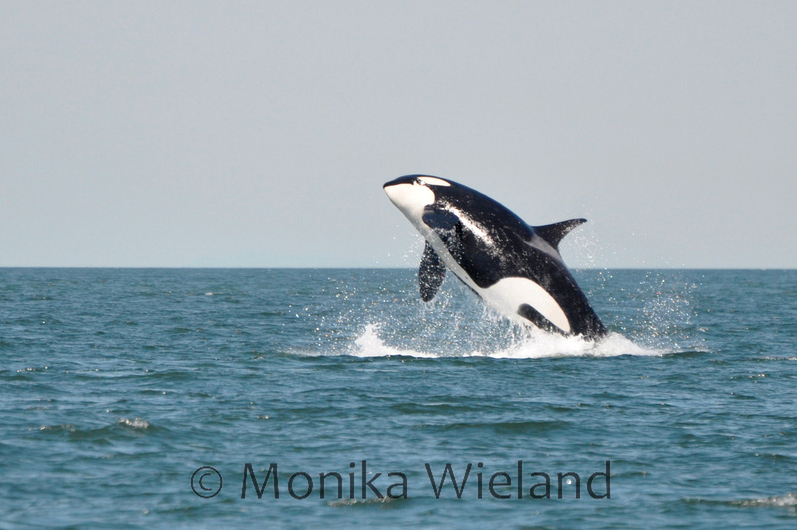
New research by Reed bio major shows that killer whales are using novel forms of social organization to form hunting parties. Photo by Monika Wieland ’07
In the wine-dark waters of the San Juan Islands, a band of killer whales is fighting for survival.
Loss of habitat, human meddling, and intense competition for chinook salmon, its main source of food, have put severe pressure on these creatures. This band, known as the Southern Residents, is now smaller than any other group of resident killer whales, which live in communities scattered along the cold coastal waters of the North Pacific.
There are, in fact, just 81 whales left.
Continue reading Orcas, Under Pressure, Adopt Killer Survival Strategy
Three Profs Granted Tenure
Congratulations to three members of the Reed faculty who were granted tenure this year:
Prof. Morgan Luker [music]
Prof. Luker joined the music department in 2010 as Reed’s first ethnomusicologist. His research focuses on the cultural politics of Latin American music, with special emphasis on contemporary tango music in Buenos Aires, Argentina. “We often think that aesthetics are just aesthetics, or that a musical style is just a musical style, but music in fact carries a tremendous range of meanings and functions, serving as both a symbol and generator of other forces in social life and history,” he says.
Continue reading Three Profs Granted Tenure
Reed biologists show how parasites drive evolution
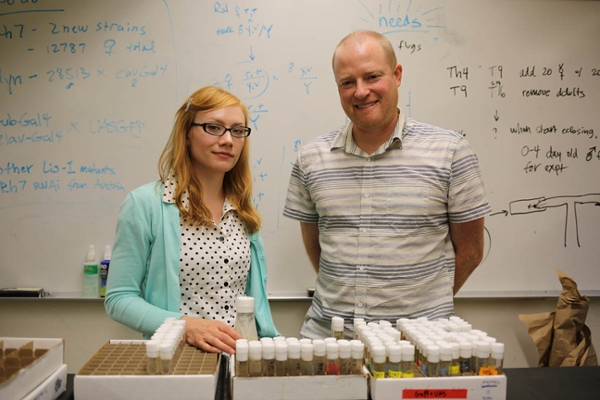
Reed bio major Shelly Skolfield ’14 and Prof. Todd Schlenke examined swarms of fruit flies (thankfully bottled in vials) to investigate the role of parasites in evolution. The experiment—the first showing that parasitic infection increases recombination in animals—was published in the journal Science. Photo by Tom Humphrey
Parasites are the Rodney Dangerfields of the animal kingdom—they don’t get no respect.
But it turns out that parasitic infection can actually spur evolution and may even be partly responsible for the origin of sexual reproduction, according to a study published in Science by a team of researchers including Shelly Skolfield ’14, Prof. Todd Schlenke [bio 2013–], and colleagues at North Carolina State University.
The researchers found that fruit flies that survived infection by parasites hatched significantly more diverse offspring, presumably to out-evolve the parasites that are trying to exploit them.
Continue reading Reed biologists show how parasites drive evolution
Field Trip to the Future of the Brain

Reed students infiltrate NeuroFutures 2015. From left: Jason Swinderman ’15, Rose Driscoll ’17, lab associate Greta Glover (kneeling), Mical Yohannes ’17, and James Fisher-Smith ’17. Suzy Renn
Reed biology research students took a field trip to the future this summer at the 2nd annual NeuroFutures conference sponsored by the Oregon Health & Science University Brain Institute in Portland last week.
Scientists at top institutions from around the nation presented their cutting-edge research on new technologies in brain imaging, brain mapping, and brain implants used to treat disease. One scientist presented her recent work on how to turn a gene that senses heat from a chili pepper into a remote-controlled brain “stimulation electrode.” She also talked about her work in engineering a device that could manipulate brain cells by shining a blue light down a microscopic tube implanted in a patient’s spine.
Other talks dealt with the massive effort to map the circuitry of the brain, and how the development of new automation techniques has drastically improved the rate of progress on this complex project. The presentations riveted the Reed students who attended, took notes, and asked questions.
Continue reading Field Trip to the Future of the Brain
Bio Prof Studies Insect Arms Race
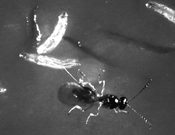
WHEN WASPS ATTACK. This parasitic wasp is about to lay eggs in fruit-fly larva. A movie you don't want to watch.
Prof. Todd Schlenke [biology 2013-] has won a $373,000 grant from the National Institute of Allergy and Infectious Diseases, division of the National Institutes of Health, to study one of nature's most unforgiving arms races-- the struggle between fruit flies and venomous parasitic wasps.
Prof. Schlenke's project is titled “A Model System for Host-Pathogen Interactions: Drosophila and Its Parasitic Wasps” and will explore how parasites suppress host immune responses, using the fruit fly Drosophila melanogaster and its natural parasitic wasps as a model host-parasite pair. The work will identify and characterize the venom (virulence) proteins that wasps use to suppress conserved aspects of host innate immunity. By characterizing venom repertoires across a phylogeny of wasps, patterns of parasite virulence strategy evolution will be uncovered.
Drosophila melanogaster is a model system for the molecular genetics of innate immunity, but little is known about the life history and virulence strategies of its natural parasites. Parasitic wasps can infect fruit-fly larvae at frequencies greater than 50% in natural populations, and are highly amenable to laboratory and field study.
Continue reading Bio Prof Studies Insect Arms Race
Eye of the Zebra (fish)
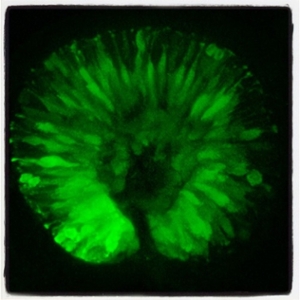
DON'T BLINK. Lateral view of a 40-hour-old zebrafish retina with the cells expressing the neurogenic gene, atoh7, highlighted with the green fluorescent protein (GFP). This image is a projection of 60 1 µm z-slices captured on the Nikon A1+ laser scanning confocal microscope in the Cerveny Lab.
Reed made a big splash at the annual Murdock College Science Research Conference in Vancouver, Washington, this month. Prof. Kara Cerveny [biology 2012–] and three students, Alison Bryant ’15, Will Horner ’15, and McKenzie Givens ’17 presented the results of their summer research. We’re proud to announce that Will earned the John Van Zytveld Award in The Life Sciences for his explanation of how retinoic acid influences retinal growth and neurogenesis in the zebrafish retina.
Students in Prof. Cerveny’s lab explore fundamental questions such as how a single cell becomes a complex organism, how undifferentiated cells choose their fate, and why some tissues regenerate after injury-- all through studying zebrafish eye and brain development.
Continue reading Eye of the Zebra (fish)
Fanfayre honors history and achievement
Reunions 2012 traveled backward and forward through time at the Fanfayre ceremony celebrating outstanding alumni, staff, and faculty.
John Sheehy '82 presented his the epic oral history of Reed College, Comrades of the Quest, an volume of "almost biblical" dimensions that was, he said, the closest thing Reed has to scripture. Despite its size, he noted that the "director's cut" would be about 30-percent longer: "Reedies appear almost incapable of expressing themselves in a single sentence when a full paragraph—or a full dissertation—will do just as well."
Continue reading Fanfayre honors history and achievement
Reed Prof Finds Fractal Geometry in Mouse Cortex
Fractals, the bizarre geometrical shapes that undergird natural phenomena from snowflakes to lightning bolts, have been discovered in a new and striking location: the synapses of the brain.
In a recent paper, professor Richard Crandall '69 [physics 1978–] and colleagues at the Reed Center for Advanced Computation found intricate fractal patterns in synapses in the somatosensory neocortex of a mouse brain.
Continue reading Reed Prof Finds Fractal Geometry in Mouse Cortex
Our Brilliant Students
With the flowering of the cherry trees on Eliot Circle comes the notice of the spring crop of student awards and fellowships. We salute the following Reed students for their scholarship, dedication and inventiveness.
Davis Projects for Peace
Two seniors in biochemistry and molecular biology, Gabe Butterfield '12 of Sedro-Woolley, Washington, and Michael Gonzales '12 of Round Rock, Texas, have designed a grassroots project in Nicaragua this summer for Davis Projects for Peace.
Continue reading Our Brilliant Students
100 Years of the Canyon
Ask anyone about Reed's campus and they are sure to mention the canyon. The 28-acre watershed--a critical part of the Crystal Springs Creek--is a beautiful sanctuary for observing wildlife, taking a walk, or simply gathering your thoughts. It's also, as one alumna put it, "very romantic."
Biology professor Keith Karoly agrees. "That's biology, too," he quipped during his presentation on science in the canyon, a lecture he gave June 8, as part of Centennial Reunions. The participation of the audience--alumni from the 1940s to the present--made it clear that the canyon is a central part of both Reed's and Reedies' identities.
Continue reading 100 Years of the Canyon

